This post is comprised of different sections
Take a look at our review of The Cell!
Learn more about psychopathy and the Oedipus Complex!
This post is comprised of different sections
Take a look at our review of The Cell!
Learn more about psychopathy and the Oedipus Complex!
Director: Tarsem Singh
Producer: Julio Caro, Eric McLeod
Writer: Mark Protosevich
Starring: Jennifer Lopez, Vince Vaughn, Vincent D'Onofrio
Year: 2000
Duration: 1h 47m
Country: U.S.A.
Language: English

Our rating
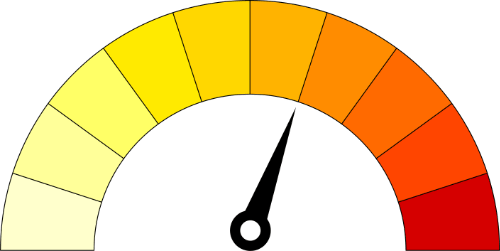
Your rating
If I had to rank a cinematographic scene which has left an indelible impression on me, the scene of the black dog next to a bathtub brimmed with blood from the film “The Cell” would be in the top 5.

I watched the film some 15 years ago, and I can still remember how this scene gave me the creeps… I re-watched the film again recently, and granted, the scene gave me the creeps.
To me, the Cell remains one of the most visually impressive films depicting the psyche of a deeply troubled man, and in this article we will explore what the contents of that psyche mean.
Catherine Deane is a child psychologist who is currently treating a comatose child patient named Edward Baines. She does so by entering the mind of her patient via some very advanced and experimental virtual reality technology.
In the meanwhile, serial killer Carl Stargher kidnaps young women and slowly drowns them inside a glass enclosure (a cell) that fills up with water via an automatic timer.
Carl had just kidnapped trapped his next victim in the cell, when he suddenly collapses into a coma in his home (due to the the a virus that had also put Catherine’s patient into a coma), moments before the FBI break in.
Desperately to find Carl’s victim, FBI agent Peter Novak recruits Catherine and her colleagues in order to use the virtual reality technology to infiltrate Carl’s mind and persuade him to reveal the whereabouts of his latest victim.
Catherine is reluctant but eventually agrees. Once inside Carl’s mind, she witnesses the horrors of his psychotic mind, producing some of the most stunning visual scenes I have ever seen in the cinema.
A race against the clock ensues to find out Carl’s victim before she drowns, leaving Catherine and Peter to puzzle out subtle cues from Carl’s deranged mind.
Many reviews have harshly critised the plot and casting, calling the storyline dull, confusing or underdeveloped.
I do not agree. Of course, one always wishes for more fleshed out characters and exciting plots. The film focus a great deal on the visuals, and I found that focus totally adequate.
After all, this isn’t supposed to be the typical crime thriller, where we get a frantic mouse and cat chase till the end, or a murder mystery, where the focus is usually on the investigation of the criminal act.
Rather, the novelty of The Cell lies on its focus to portray the mind of a deeply disturbed man, and it does so excellently.
Obviously, a focus on the visuals comes at the cost of a simpler storyline. However, I do not agree that the story is as shallow as most critics have stressed. In fact, some parts of the story line bring up very interesting moral points.
For example, there is a scene when Peter tells Catherine of a case he worked on as a prosecutor, where a man called Charles Gish had molested and killed a little girl. He wasn’t charged with murder because the court ruled that Gish was insane when he killed the girl, and that a life of sexual abuse drove him to do those things. Then Peter gives a sneering smile as he believes that a child can experience much worse abuse than what Charles Gish went through and still turn out to be someone who would never hurt another person.
Peter’s point is at the core of an extremely controversial and debated ethical problem in criminal psychology and neuroscience: to what extent is a psychopath responsible for his actions?
This is a profound question. Of course, a lengthy discussion on the moral culpability of psychopaths was way out of the scope of the film. Nevertheless, I appreciated the brief inclusion.
Acting was generally ok, not bad, not great. Vicent D’Onofrio, however, was truly awesome (is there a role the fellow cannot play?!?).
The bonus material in that came with the DVD version of the film really puts into perspective the amount of effort the production team placed on make-up, costumes and CGI, and that effort really shows.
The soundtrack was also very interesting, and I really got disturbing vibes with some of the tunes; it reminded me a bit of some of the soundtrack Alejandro Jodorowsky would use. For example, the beginning of the film starts with a cacophony of trumpets, drums, and other instruments, that almost sound like they are playing in a disorderly way – which is a great way to represent a broken mind.
Ever since I watched the film some 15 years ago, some of the scenes from The Cell remain very vividly in my mind.
Of all the negative reviews I have read, I could not endorse any of them. Of course, one shouldn’t expect a typical crime thriller, a genre which themes are becoming hackneyed and overused anyway, in my opinion.
The Cell is surely different, and I welcomed that difference. It is meant to be a film with a focus on the inner workings of the mind of a psychologically disturbed man.
With stunning visuals, awesome soundtrack, great make-up and costumes, class acting from D’Onofrio, and a reasonably engaging story, The Cell remains, in my opinion, a success.
Here in mindlybiz, The Cell gets a rating of 3.5.
The story line by itself isn’t hard to grasp (really, they just need to find Carl’s victim before she drowns).
However, you should expect some pretty weird and disturbing scenes, as a great portion of the film deals with the contents of Carl’s psychotic mind.
For that reason, The Cell gets a bizarrometer score of 2.5.
As we will shortly see, there is abundant evidence from psychological studies that suggests that child maltreatment is a good predictor for the development of psychopathic traits, such as violent behaviour, lack of empathy and delinquency.
In the movie “The Cell”, serial killer Carl not only had suffered from maternal neglect, but had also been at the mercy of a ruthless and sadistic father.
Because his father physically and emotionally abused Carl as a child, instilling fear into him, Carl learnt to fear the very same person that should be offering support (a secure base).
Indeed, the lack of an appropriate emotional response from his father meant that Carl never really acquired the ability to put himself in other people’s shoes. As Carl lacks empathy, the killings he perpetuates are always done with emotional detachment.
Carl suffers from a rare type of schizophrenia due to the presence of a virus that activated upon the traumatic baptism experience. As a result of this ailment, Carl has become increasingly psychotic, eventually engaging in the serial killings in his adulthood.
Now, the emergence of schizophrenia together with the maltreatment he experienced as a child was a disastrous partnership. Influenced by the misogynistic views of his father and anger towards his mother for having left him alone with his abusive father, Carl internalised the idea that all women are “whores”.
So, just as he was taught that baptism functions to cleanse oneself from sin, Carl believes his killing ritual to be his way of “purifying” women.
Carl’s ritual consists of drowning his victims, which is ironic since during Carl’s baptism his father almost drowned him.
So Carl’s ritual uses the same very tools that his aggressor (his father) had also used. At a certain point in the film, Carl admits his father was more powerful than him, evincing a typical case of “identification with the aggressor” (in which someone goes from submissive to domineering).
Despite this hatred towards women, there are subtle cues in the film to suggest that Carl may be also trying to fill up the hole left by his absent mother.
For example, keeping his victims around in personalised cubicles (as Catherine witnessed when inside Carl’s mind) and the way Young Carl seems to yearn Catherine’s protection seem to be indicators that Carl may be searching for maternal affection.
OK. So let’s first review a few theories on attachment that might be helpful in a deeper analysis of this film.
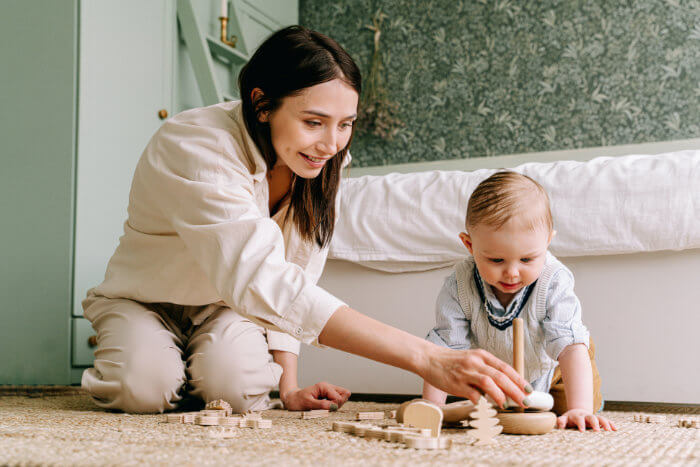
In the 1940s British psychiatrist John Bowlby examined the first years of life of adolescents that had been detained due to delinquent behaviour.
He speculated that individuals that had suffered emotional deprivation in childhood would be at risk to exhibit delinquent behaviour.
As with his predecessor Sigmund Freud, Bowlby believed that the way we interact with others was, first and foremost, influenced by those early years. Specifically, Bowlby suggested that children instinctively look for a primary caregiver (e.g., the mother, the father, a grandparent).
If the interactions with the primary caregiver are adequate, the child will develop a “secure base”, which is an important step in the development of the child’s personality. With a secure base, the child will learn to explore the surroundings and will start to socialise.
The secure base is developed during a very specific and critical period in childhood. If the primary caregiver is absent during this critical period, it is very unlikely that the child will succeed in developing the secure base.
Bowlby went on to conclude that delinquent behaviour was more common in children that had experienced maternal deprivation during the critical period, and thus lacked a secure base.
For example, Bowlby interviewed delinquent teenagers and observed that those that had had maternal deprivation showed more signs of psychopathy (e.g., inability to experience guilt, lack of remorse for criminal behaviour, lack of empathy for their victims).
Based on Bowlby’s models, development psychologist Mary Ainsworth devised a very clever experiment (the Strange Situation) that for decades has become the basis for assessing the quality of a child’s attachment to their caregiver.
The experimental procedure goes like this (see also video above):
1) infants (1-2 year old) play in the experimental room while their caregiver passively watches.
2) a stranger comes into the room and interacts with both the caregiver and then the infant. The caregiver then leaves the room, leaving the infant alone with the stranger.
3) After a couple of minutes the caregiver comes back in the experimental room.
4) The stranger and caregiver then both leave the room, leaving the infant alone.
5) The stranger then enters the room. A few minutes later, the caregiver also enters the room and picks the infant up.
6) The stranger then leaves the room, leaving the infant alone with his/her caregiver.

Ainsworth reported four broad distinct styles of attachment, depending on how the infant reacted to each of these situations:
Secure
Infants in this category explored the room when the parent was around and even interacted with the stranger, using the parent as a secure base. When left alone, they got slightly, but not overly, upset. They quickly got comforted as soon as the parent returned and resumed their playing.
Insecure: Anxious-avoidant
Infants with an avoidant pattern didn’t care much whether either the parent or the stranger were in the room or when either left. There was virtually no exploration regardless of who was present in the room. The children were unemotional for the most part and did not show separation anxiety when the caregiver left. They also did not seek comfort when the caregiver returned.
Insecure: Anxious-ambivalent
Here, infants stayed around their parent and did not explore the room much. They were clingy and exhibited anxiety even before the caregiver left the room. When the parent left, they threw a tantrum and upon the parent’s return, the children reacted with anger and refused to continue playing.
Insecure: Disorganised
Here, the infants weren’t very responsive and/or engaging. They tended to fluctuate between extreme avoidance and outbursts of emotion. They also looked confused and disoriented upon the caregiver’s return.
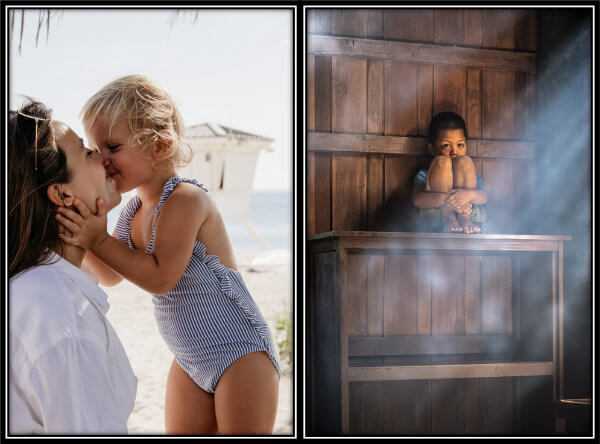
In general, there is a consensus in the attachment literature that being affectionate towards the child (e.g., playing with them, comforting them when they cry, giving them food when hungry, etc) will most likely lead to a secure attachment.
However, if the parent abuses or neglects the child this can lead to an insecure attachment as the child feels he/she cannot depend on his/her parent.
For example, children with a disorganised attachement pattern become anxious of the people that they are looking for protection, hence will often appear confused. The child will also be in constant fear, avoiding most social situations.
In the most severe cases, in which the child is very unresponsive and/or shows extreme sadness or fear during the experiment, it could indicate that the infant is at greater risk of developing a condition called Reactive Attachment Disorder. The child will be unable to form a healthy relationship with the primary caregiver, and will have an increase chance of becoming violent, abusive and cold-hearted towards others.
Worryingly, some research also found associations between insecure types of attachment (particularly avoidant/anxious) with psychosis development.

Psychologist Peter Fogany put forth a theory based on the concept of mentalization that attempts to explain, among other things, the behaviour of psychopathic individuals.
Mentalizing is the ability to think about what goes on in other people’s minds so that we can understand their behaviour.
Of course, we cannot know what others are thinking, feeling and wishing. However, we can infer what they are thinking, feeling and wishing from the way they behave and talk (e.g., if we see a child holding a broken toy and crying, we can infer that they are sad and want to have the toy repaired).
This comes in handy in social contexts, because mentalizing allows us to predict the response of others, which will be decisive in forming relationships (e.g., by promoting cooperation and avoiding conflict).

Fogany hypothesised that our ability to understand others is very much shaped by how our own mental states have been understood during childhood.
If the primary caregiver has had an adequate emotional response to the needs of the child, the child will have been able to register that his/her own feelings had been understood. The caregiver should thus transmit his/her mental states to the child, so that the child learns how this kind of communication takes place.
However, when children are physically abused, the ability to mentalize is seriously compromised. Adopting the perspective of the aggressor (the caregiver) would bring more pain, so children experiencing maltreatment simply do not learn to reflect upon what goes on in other people’s minds. These children tend to grow up and become impulsive and lacking empathy (what Fonagy refers to as “pre-mentalizing modes”).

Fonagy and colleagues demonstrated that most prisoners that had been incarcerated due to violent crimes came from a deficient family environment. Importantly, the research team also showed that these prisoners had a decrease ability to mentalize, that is, they failed to understand the mental state of their victims.
So, violent criminals tend to reject individuals and institutions as possible objects of affection. They seem unable to put themselves in other peoples’ shoes and fail to understand the serious psychological harm they inflict on their victims.
In one well-known study from the University of Cambridge, a research team analysed a series of variables and their relationship to delinquency, such as low IQ and school failure, child maltreatment, parental conflicts, size of family, etc.
For example, it was observed that about 40% of delinquents experienced maltreatment by one of the parents, with implicit consent from the other. They also showed that the probability of children becoming delinquents later in life increased if the child had little to no affection from any of the parents. Furthermore, having delinquent parents increased the chances that their children would also be delinquent and would commit similar crimes to those committed by their parents.

As mentioned above, Bowlby had been greatly influenced by the psychoanalytical theories of Freud, particularly the idea that the initial interactions between child and mother were crucial for the later development of the child.
And if there is an idea that is quintessential Freudian is that of the the Oedipus complex.
Freud believed that the Oedipal complex occurs during the Phallic stage of psychosexual development, which is around 3 to 6 years old. It’s called phallic because, during this period, libido would be mostly concentrated in the erogenous areas of the child’s body (e.g., penis).
The main (and very controversial) idea is that the child starts to experience unconscious sexual desires for the mother.
Note that I don’t think this means that the boy is consciouslly wishing to have sexual intercourse with the mother. As I understand it, it is more like the boy desires satisfaction from his mother somehow, but he doesn’t really have a clear idea (definitely not what adults think of genital sex).
Also note that Freud considered these thoughts to be completely unconscious, so the child isn’t consciouly brooding over how best to get satisfaction from the mother. It is essentially energy (libido) residing in the boy, which will then manifest itself into behaviours.

For example, Freud saw boys’ behaviours such as becoming fixated on the mother (e.g, always asking for her attention, saying he wants to marry her, wanting to sleep on her bed), and acting angry and hostile towards the father (e.g., when the father shows affection to the mother), as telltale signs that the child had entered the Oedipus phase.
At the same time, the boy develops feelings of jealousy and envy towards the father. This hostility directed to the father comes about because the boy realises that the mother also shows affection towards the father. Thus, the boy starts to see the father as a sort of a rival for the mother’s attention, and so, needs to be taken out of the picture.
However, the thought of disposing his father’s position with mother, and take his place, causes anxiety in the boy, because the boy knows the father is much stronger than he is. This anxiety takes the form of an irrational fear that the father will remove the boy’s penis as punishment for desiring the mother (what Freud coined as castration anxiety).
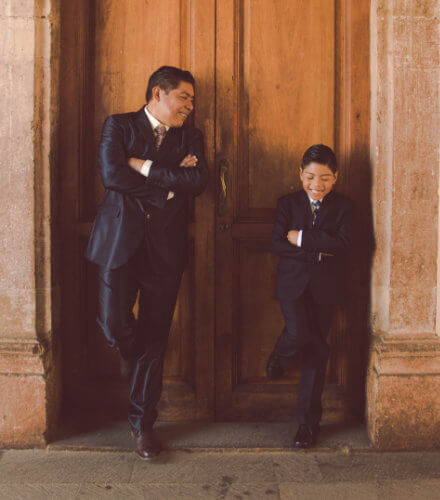
Not wishing that fate, the boy begins to identify with the father, mimicking his father’s attitudes, mannerisms and behaviour. The idea is that if the father sees the boy as someone similar to him, he will not be punitive.
It is at this point the superego develops. The boy internalises the moral values of the parents, and realises that inappropriate impulses should not be acted upon.
This covert identification with the father also causes a shift in the boy’s desires from the mother towards other women.
According to classical psychoanalysis, the Oedipus complex is fully resolved once the boy positively identifies with the father, which allows for a mature sexual identity to develop.

In psychoanalysis, thoughts that cause too much anxiety on the child (e.g., because they are extremely embarrassing or frightening) are often repressed and sent to the unconscious mind. These problematic thoughts, however, usually find a way to express themselves consciously, forming what psychoanalysts call a neurosis.
For example, unconscious sexual desire for the mother are too emotional for a child to handle, so these thoughts are sent to and locked in the unconscious. However, if those sexual urges aren’t acknowledged, they do not simply stay dormant, they will actually want to be expressed. That unconscious and repressed content can partly escape the surveillance of the superego by disguising itself as symptoms, such as phobias, depression and irrational anxiety.
Furthermore, if the boy doesn’t get the love from his mother (perhaps due to maternal neglect), he will be constantly attracted by women whose personality reminds him of her mother. This is a coping mechanism to compensate for the love gap left by the mother, so the boy will try to get that lost love from other women.
Finally, remember that the boy develops castration anxiety during the Oedipus complex stage. If this anxiety is continually being repressed (say, because the father is absent or punitive), then this anxiety will remain unconscious and will manifest itself as symptoms later in life. For example, he might be competitive towards other men that resemble his father.
A much larger problem becomes when the parents become harshly punitive and physically abusive to their children.

According to Freud and followers, identification with the aggressor is a defense mechanism to protect one’s conscious self from caving in to anxiety.
For example, if a child is subjected to harsh punishment from his father, that child might become a bully later in life, perhaps even using the same types of punishment on his own children.
According to psychoanalysts, people with “identification with the aggressor” adopt the methods and points of view of an aggressor in order to feel that they are in control. What was passive and helpless once, has now become active and in control. What was once experienced as submission is now experienced as dominance.
Normally, “identification with the aggressor” occurs initially during the Oedipus phase, when the boy identifies with his father in order to cope with the castration anxiety. This identification will form the basis of the child’s superego – the seat of morals and values that will shape the adult conscious mind.
If the father shows affection and has an appropriate response when the boy is behaving inappropriately (e.g., it talks to the boy when the boy becomes angry at him for no reason, explains why he can’t be always with mommy), the boy will gradually realise that he can learn from his father. Ultimately, the father becomes a role model rather than a rival.
But what if the father is actually punitive and abusive during the Oedipus phase? Alas, Freud and subsequent followers say little about this.
My take is that if the father doesn’t step down and constantly instill fear in the boy, he will internalise fear. For this boy, anxiety will permeate his life, he will constantly feel inferior and insignificant, maybe falling into a depression, being socially reclusive and/or developing a psychosis.
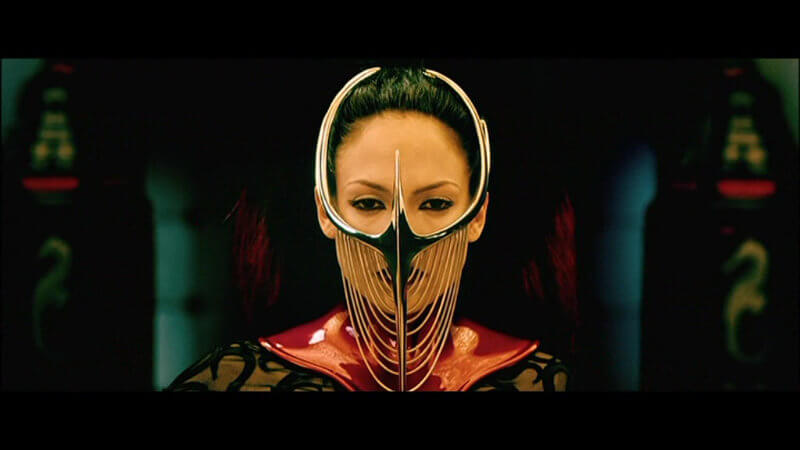
Clearly, the most fascinating and weirdest parts of the film are the contents of Carl’s psyche. So, in this analysis, I will try to make sense of some of the imagery and concepts that relate to those contents.

From her meanderings in Carl’s psyche, Catherine comes to the conclusion that Carl’s mind is split into two distinct entities:
1) King Stargher
This is Carl’s idealised version of himself. Carl portrays himself as a domineering king in a kingdom where he is free to indulge in all sorts of perversions.
King Stargher is clearly the predominant part of Carl’s psyche, permeating almost every corner of his unconscious.
2) Young Stargher
Here, he sees himself as an innocent child, who is a victim of the life circumstances.
Young Stargher occupies a much smaller fraction in Carl’s psyche than King Stargher.

Note how Young Stargher is always on the run from King Stargher, always afraid of getting caught. Several traps are set up to catch Young Stargher (e.g., the blades that cut the horse).
Catherine’s insight is that the innocent part of Carl’s psyche, is still available to communicate, but it is at great peril of vanishing. Her idea is to try to reason with Young Stargher and cajole him into revealing the whereabouts of Carl’s latest victim.
So Young Stargher represents the part of Carl’s mind that shows remorse and is aware of the pain he has caused.

It isn’t entirely clear what caused the split King Stargher/Young Stargher.
In the film, it is revealed that Carl possesses a very rare and severe form of schizophrenia called Whalens infraction. This (fictional) ailment is caused by a virus that attacks the neurological system of the baby in uteru. It lays dormant, but when the individual has some kind of trauma, the virus deteriorates the brain very quickly, and there are no medication to halt the progress of the disease.
The neurologist explains that the trigger is in most cases water-related. So, the trauma of the baptism activated the virus, which started degenerating Carl’s brain.
After the baptism incident, Carl began hearing voices, an imaginary friend who helped him and gave him advice. This imaginary friend will later become the voice behind the serial killings perpetrated by Carl.

As we learned in the section Influence of the environment in psychopathy, child psychiatrist John Bowlby suggested that caregivers should allow the formation of a secure base in their children, so that they can go on and develop a healthy personality.
If children don’t possess that secure base, they might end up with an anxious/insecure or disorganised attachment pattern. Children with these types of attachment are more likely to develop serious issues later in adulthood, such as engaging in delinquency, being violent, lacking empathy, developing a depression or even becoming psychotic.
It will come as no surprise that Carl’s familiar environment was hardly conducive to a secure attachment pattern.
Had Carl participated in Ainsworth “Stranger Situation” experiment, I bet he would exhibit a very insecure attachment type, thus putting him at a much higher risk of becoming a psychopath.
Indeed, research suggests that if a child has experienced the sort of physical and emotional maltreatment that Carl experienced, he/she would be at a great peril of developing psychopathic traits. That means showing violent and impulsive behaviour, deliquency, no remorse for crimes they commit, lack of empathy for the victims, etc.
If you have read the section Mentalization, then you will be familiar with the idea that psychopaths exhibit a complete dissociation from their feelings, such that they do not usually feel empathy.
So the torture Carl applies is done with complete emotional detachment; Carl simply doesn’t empathise with his victims’ suffering, because his ability to mentalise has been seriously compromised.
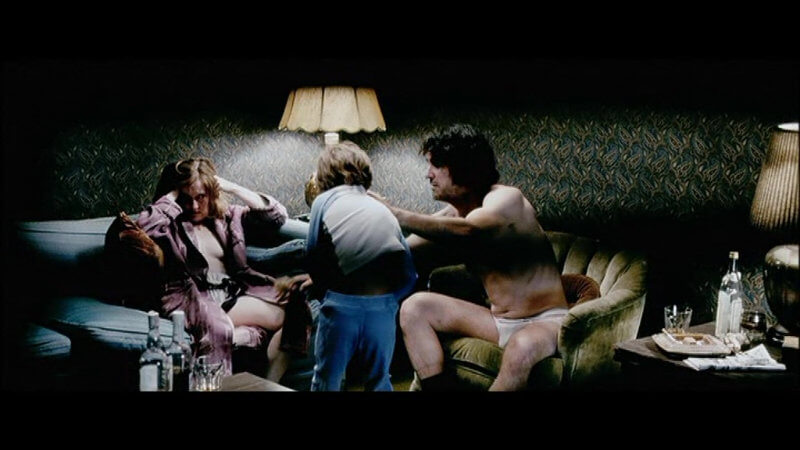
Carl obviously suffered from maternal neglect.
His mother most likely was unable to cope with an abusive husband and may have been left when Carl was still very young. The only information Carl has of his mother comes from his father, who doesn’t spare in humiliating and denigrating her in front of Carl.
Carl’s father also brought home girlfriends (or prostitutes) who never stood up to his bullying.
For example, there was an incident in which one of his father’s girlfriends gave Carl a doll. His father flipped out and said that dolls are not for boys. When the woman tried to intervene, Carl’s father yelled at her saying she is not Carl’s mother and that his actual mother left them. He also points to the vagina of his female acquaintance and refers to it as a “place of evil and death”.
Now, these events seem pivotal in having shaped Carl’s mind about the opposite sex. Carl grew up internalising his father’s views and opinions about women.
In addition, Carl’s image of a motherly figure has been seriously desecrated. Carl probably hates her mother for abandoning him and leaving him at the mercy of his abusive father.
As mentioned above, Carl’s lack of any maternal affection and internalisation of his father’s mysognistic views, has shaped Carl’s image of women as debased prostitutes. In Carl’s mind, all women are “dirty”, and views them as the epitome of debauchery.
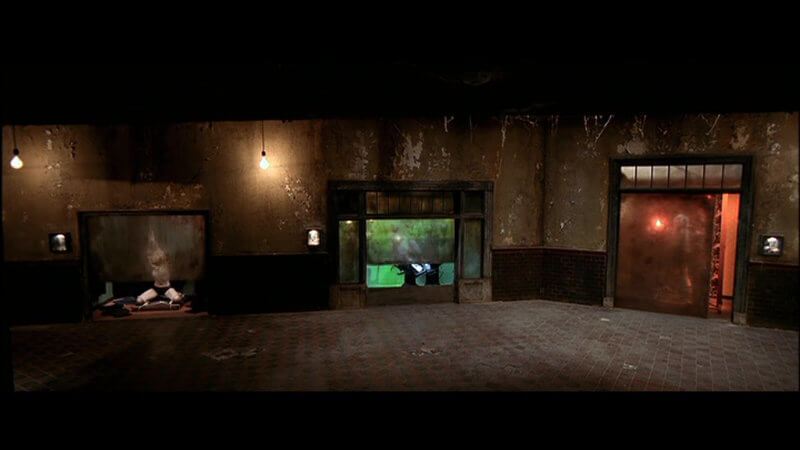
This is clear when Catherine enters Carl’s mind for the very first time. She sees Carl’s actual six victims (including the muscled woman), each inside their own cubicle. The women are tied up, gagged or turned into marionettes or slaves.
They all look like dolls, whose faces resemble the dolls the FBI found in the raid to Carl’s basement (women bodies with skull heads, bird heads, or defaced).
In a way, maybe that’s what the ritual is all about. It’s Carl’s sick idea of purifying women.

Also, after taking his victims to his house and turning them all into dolls, Carl makes them collar and attaches it to the corpses of his dead victims. As Special Agent Gordon Ramsey says, the collar makes Carl feel that the women belong to them.
That’s why he feels turned on when he has them drowned and turned into dolls – Carl’s purification ritual. There is a scene in which we see him masturbating while suspended above one of his victims dead body.
But what’s with the perversion with dolls?
We know from Carl’s memories that he has a very defiled image of women: his mother left and his father’s girlfriends allowed his father’s abuse. He probably has not have any female friends or girlfriends, and doesn’t know how to engage with women in daily life.
However, with dolls, he is able to create his own image of a women – as he had been doing since his early childhood. With his dolls he idealises being in control and possessing women.
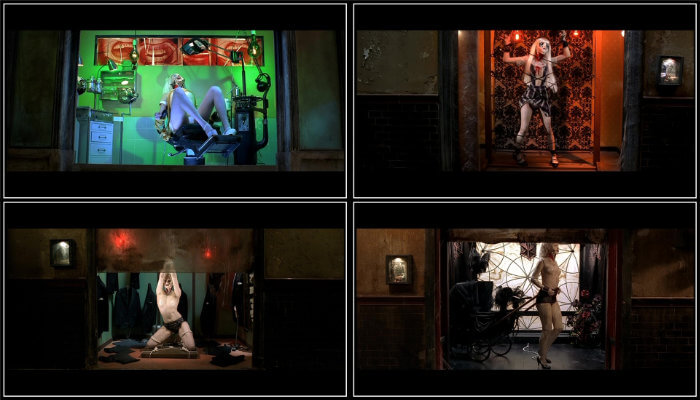
Somewhat paradoxically, the absence of a motherly figure has left a hole that Carl is unconsciously trying to fill.
When Catherine enters Carl’s mind for the first time, she sees the victims looking all like dolls and tied up in their own private cubicles. One is surrounded by men’s suits, another at the dentist, another pushing a pram. It’s as if Carl wants to have the women around, but seems somehow unable to imagine appropriate episodes involving them.
So, perhaps, Carl’s mind is, unconsciously, trying to compensate for the complete lack of maternal affection. That would surely fit the Oedipus complex that I discussed above.
Psychoanalyists argue that when children are victims of maternal neglect, they will constantly seek women that resemble their mothers to fill up the hole left by the absent mother.
Maybe the split we discussed above (King Stargher vs Young Stargher) reflects the dichotomy between (1) the idea that all women are whores and the wish to dominate them (King Stargher) and (2) the search for a motherly figure that could ease the emotional pain Carl experiences (Young Stargher).
The conflation of these two mindsets is so confusing, that it results in weird and deranged ideas about the opposite sex.
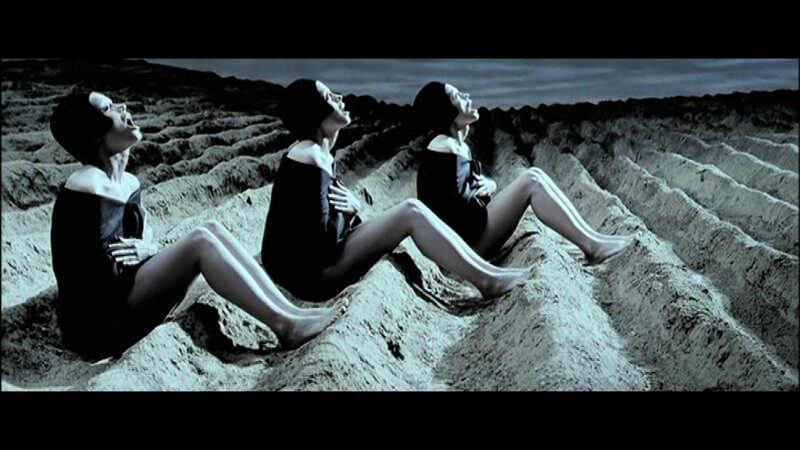
And this confusion is clearly illustrated during the scene with the three women staring at the sky with their mouths open. They say:
Mother One: Have you seen him? My boy? My little one? His father took him from me.
Mother Two: So I spit him out my hole, big deal. Don’t mean anything.
Mother Three: My child is an abomination. He is damned. He has no soul.
Note how the three mothers show completely different sentiments. Mother One sounds like she cares about and is looking for Carl. Mother Two sounds like she simply doesn’t care, whereas Mother Three is downright emotionally abusive.

Catherine realising that Carl’s image of a mother is completely twisted, she resorts to the strategy of adopting the figure of a kind of “Virgin Mary” – purity in its highest form. Her idea is to counteract Carl’s perverse ideas that women are all “whores”.
She succeeds in bringing Carl closer to her, and even manages to communicate with him.
However, in the end, Catherine accepts to drown Young Stargher at his request.
Why?
As it turns out, water is the link that binds everything together.

Water plays a significant role in this film. Consider the following scenes:
1) Carl had a terrifying baptism experience when he was six years old. His father forcibly pushed him under water, triggering a seizure and marking the onset of Carl’s schizophrenia.
2) As a means of torture, Carl puts other women in a locked chamber (the cell) which slowly fills up with water, with the intent of drowning them.
3) Catherine immediately notes that Carl used to suspend himself on chains with steel rings attached to his back. That gives him the sensation of weightlessness, similar to what one experiences under water.
4) When Young Stargher encounters Catherine as the Virgin Mary, he tells her the story of finding an injured bird. Carl thought that once his father found out that he had it, he would do something horrible to the bird. In order to save the bird from a more tragic death, Carl decided to drown the bird in the sink.
5) In the end, Catherine holds Young Stargher under water until he drowns, killing Carl in real life.
It’s never made explicit in the film but I believe that these pieces of information are all linked, and the common thread is obvious: water.
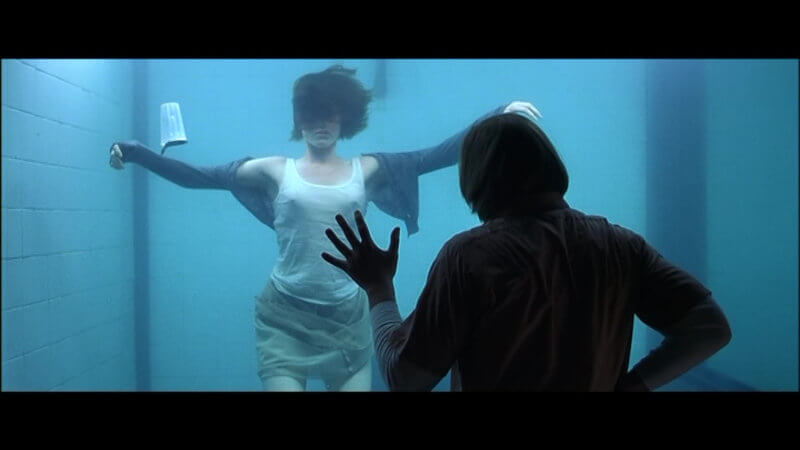
Water is a pervasive feature in all dream scenery, and I think this is very meaningful for the analysis of the film.
As explained above, Carl believes drowning women will purify them. In his head, just as he was taught that baptism represents the cleansing from sin, so does his ritual with water represent the purification of women.
Note the “identification with the aggressor” that we discussed above in action. Even though Carl was traumatised by his baptism experience, he still has his victims go through the similar terrifying experience of drowning. Carl is using the tools from his aggressor to be able to quell anxiety and feel in control (a change from submissive to domineering, which is typical of people with “identification with the aggressor”).
Carl actually mentions this to Catherine, when she says that Carl’s father was evil and treated Carl as a thing, to which Carl responds, “No, he was… more powerful than me”.
Remember, identification with the aggressor is a coping mechanism that allows you to shift from being submissive to being in a position of dominance.
Carl apparently does not see his father’s actions as evil and wrong, but simply the result of being more powerful than Carl is. Thus, the idea of subjugating women (by kidnapping, drowning and turning them into dolls) is what makes Carl feel powerful, feel that he is in control.
The same applies to the drowning of the bird. Carl mentions to Virgin Mary that he saved the bird by drowning it. This was likely the first experience that made Carl feel he was in control. Even though the bird died, Carl felt it was the most appropriate course of action, as he saved the bird from a much more atrocious fate at the hands of his father.
So, in Carl’s mind, water has a double function of being both the bringer of death and a kind of salvation tool. And this is very much true in relation to Carl himself.
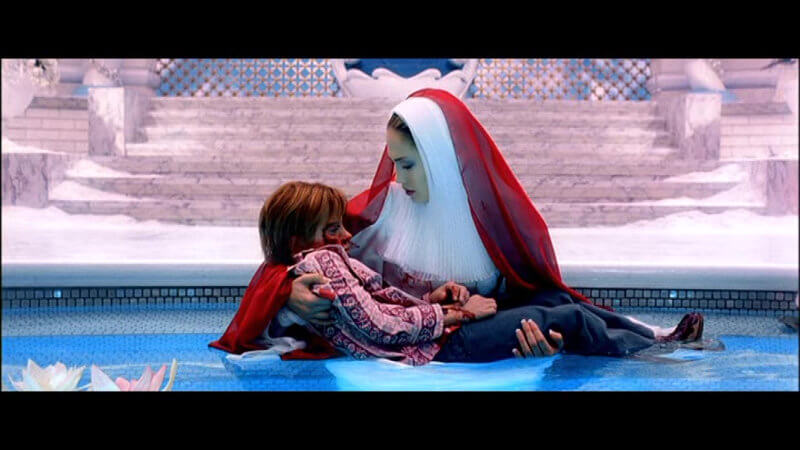
One question that might have bothered you is: why did Catherine accept to drown Young Stargher? Why not simply kill King Stargher?
Well, Young Stargher is as much Carl as King Stargher is, so if Catherine kills the one, the other will inevitably die as well.
Even though Catherine had successfully injured King Stargher, she was unable to kill him. When Catherine pierces a sword into King Stargher, he says that it isn’t real, that he is a God and she cannot kill him.
You have to remember that Carl is inside Catherine’s mind at this point. Any “physical” injury that Catherine inflicts in Carl in her mind isn’t an actual injury in Carl’s physical body.
Tipped by Young Stargher (with the story of the bird), Catherine realises the only way to end Carl’s madness is to make use of water to kill him.
And this is when Catherine decides to hold Young Stargher under water until he drowns, killing Carl in real life.
Drowning is purely metaphorical, since, as I said, Carl is inside Catherine’s psyche. What it could have done was triggering some sort of seizure in Carl because he was re-experiencing the same traumatic event when his first seizure occurred.
By submerging Young Stargher in water just as if he were being baptised, Carl was (in his mind) reliving that traumatic event when he was actually baptized, causing an actual seizure that ultimately killed him in real life.
Young Stargher knew this would be the only way to defeat King Stargher.
The Cell’s main premise is based on the very well-established link between child maltreatment and psychopathy.
The virus that ailed Carl and the abuse he experienced as a child was a catastrophic partnership.
As Carl succumbed to psychosis, his views of the opposite sex became increasingly disturbing. Influenced by a mysogignistic father and lack of maternal affection, Carl probably viewed women as perverse and impure. Just as he was taught that baptism is the cleansing from sin, Carl’s drowning ritual was nothing but his morbid idea of purifying women.
The ritual also gave him control. Having been subjected to physical abuse at the hands of his father, Carl’s “identification with the aggressor” meant that he could now flip a position of submissiveness to one of domination. King Stargher is the unconscious realisation of this controlling and sadistic part of Carl’s mind.
At the same time, Carl is desperately trying to fill in the hole left by an absent mother. The macabre scenes Catherine and Peter witnessed while inside Carl’s mind (e.g., his victims being kept in private cubicles; the three mothers with mouth agape looking at the sky; Young Carl seeking Catherine) is suggestive that he may be searching for a motherly protection.
Of course, Carl’s deranged mind is unable to form a healthy mother figure, so his mind has concocted a weird and twisted version of it.
Even though an innocent and remorseful part of Carl lives in the form of Young Stargher, King Stargher’s insidious influence in Carl’s mind is simply too strong for Young Stargher to be able to make any difference.
In the end, however, Young Stargher reveals to Catherine how she can save Carl from the torment that it is his mind.
There was one topic I deliberately chose not to pursue: the criminal responsibility of the psychopath.
The reason is that this is an extremely controversial topic in criminal psychology, as there are arguments that could be made that could exempt psychopaths from criminal responsibility (or at least attenuate it). This naturally makes many people extremely unconfortable.
For instance, if Carl hadn’t gone through the traumatic childhood he experienced, he would have probably turned out to be a normal person. Shouldn’t we then rather put blame on Carl’s father for turning Carl into a psychopath? Or maybe the Whalen’s infraction altered the chemistry and functioning of Carl’s brain to such an extent that his criminal behaviour is being dictated by these alterations in the brain. In that case, if any other character had a similar brain chemistry as Carl, would he/she be able to avoid becoming a serial killer?
But I’d like to emphasise again something that Peter Novak told Catherine:
“I believe a child can experience a hundred times worse the abuse than what Gish went through and still grow up to be somebody that would never, ever, ever hurt another human being“.
What is your thought on the matter?
See you in the next article!
Very solid analysis!! I’m a clinical mental health therapist and I was looking for a good clinical breakdown of this movie. This one did not disappoint. Your analysis was thorough and spot on. ❤
Hi Aliya,
Thank you very much for your comment!
Given that you are a mental health therapist, I would be very curious to hear your opinion on how clinical practitioners would even approach a case like that of Carl Stargher (provided he sought help in the first place, of course)? His case seems so extreme that I wonder how current therapies would be prepared to dealing with such cases. Any thoughts?